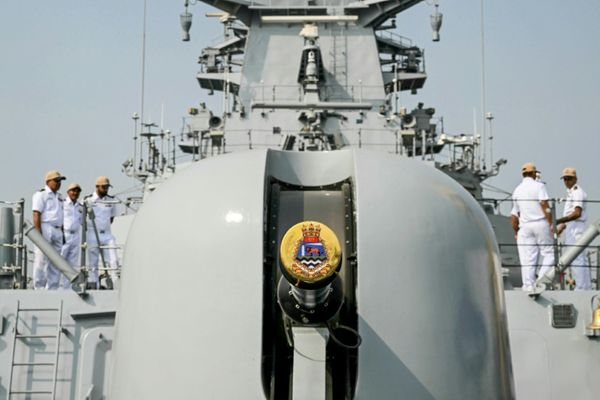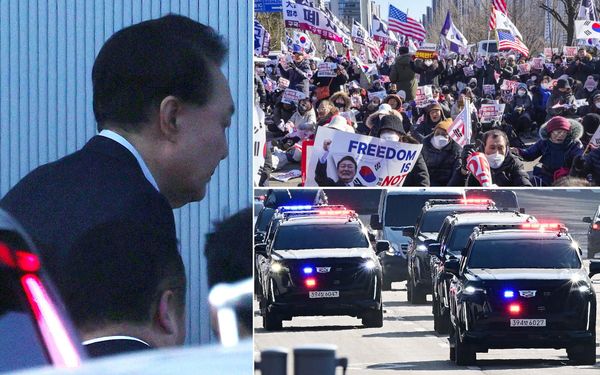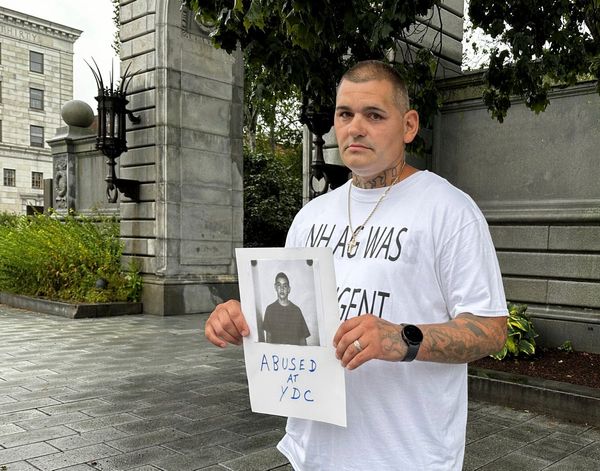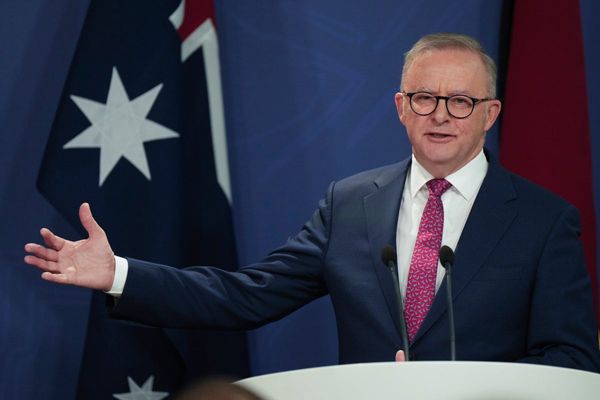
What’s the latest?
Russian forces have bombarded the government headquarters in Ukraine’s second biggest city, a huge armoured column is rolling towards the capital, and details have emerged of an attack that killed scores of Ukrainian soldiers in the east.
In Kharkiv, Ukraine’s second-biggest city, at least 11 civilians died after Russian missile strikes on the government headquarters, according to Ukrainian officials.
About 70 miles (112kms) north-west of Kharkiv, local officials in Okhtyrka said more than 70 Ukrainian soldiers had been killed in a missile strike on a military base, though there were conflicting accounts of when the attack took place.
Russia’s defence ministry warned residents in Kyiv to leave their homes as it plans to strike targets there, the Russian state news agency Tass reported. Interfax Ukraine said five people were killed and five injured in an attack on a television tower.
A Russian convoy approaching the capital is estimated to have doubled in length – to 40 miles (64km) – since three days ago. The front of the convoy is about 17 miles (25km) from the city centre.

Satellite photos also showed deployments of ground forces and ground attack helicopter units in southern Belarus.

In the south the key port city of Mariupol was without electricity following multiple missile attacks from advancing Russian forces, while reports said the southern city of Kherson was surrounded.
What has happened since Russia invaded?
On Thursday Russia attacked Ukraine along multiple axes, bringing to a calamitous end weeks of fruitless diplomatic efforts by western leaders to avert war.
Fighting and other military activity took place around and on the way to Kyiv, including an ambitious attack by helicopters on the Hostomel military airbase.
Ukraine lost control of the Chernobyl nuclear site in the north, where fighting raged after Russian troops crossed the border from Belarus.
A substantial attack was also aimed towards the eastern city of Kharkiv.
Russian forces also headed north and east from Crimea. Social media footage showed them reaching Kherson on the Dnieper, 80 miles (130km) inside Ukraine.
On Friday Russian forces reached the outskirts of Kyiv, and carried out an amphibious assault from the Sea of Azov near Mariupol. The shape of the Russian incursion became clearer.
On Saturday Russian forces in control of territory to the north-west of Kyiv continued their assault on the capital. Moscow claimed its forces had taken control of the Hostomel airfield.
Elsewhere, heavy fighting was reported in and around Kharkiv and there were Ukrainian counterattacks in some places previously claimed by Russian forces, including Sumy in the east.
On Sunday an attempted incursion in to Kharkiv was defeated.
On Monday Russian rocket attacks killed dozens of people Kharkiv.
Pre-dawn blasts were heard again in Kyiv and in Mariupol, which was surrounded by Russian forces and under heavy attack.
How did we get here?
Over the past few months Russia has forward-deployed hundreds of tanks, self-propelled artillery and even short-range ballistic missiles from as far away as Siberia to within striking range of Ukraine.
Moscow’s rhetoric also grew more belligerent. Vladimir Putin demanded legal guarantees that Ukraine would never join Nato or host its missile strike systems, concessions he was unlikely to receive. A flurry of diplomatic activity did little to ease tensions.
The second half of February was long seen as the most likely period for a potential offensive. Russian soldiers stayed on in Belarus beyond the end of planned military exercises, and the Winter Olympics, hosted by ally China, concluded.
The invasion was preceded on 22 February by Putin saying Russia would recognise the territorial claims of its two proxy states in east Ukraine. He had already ordered his forces into Russian-controlled territory in Ukraine.
On 22 February a Reuters witness saw columns of military vehicles including tanks and armoured personnel carriers on the outskirts of Donetsk, the capital of one of the territories claimed by Russia.
What do we know about Russia’s deployments?
Scores of battalion tactical groups – the smallest operational unit in Moscow’s army, consisting of around 800-1,000 troops – were put in place near the borders of Ukraine in both Russia and latterly Belarus prior to the invasion. As of 18 February the US estimated that Russia had between 169,000 and 190,000 personnel in and around Ukraine.
An estimated 32,000 separatist forces were already operating in the breakaway areas of Donetsk and Luhansk – some of whom were likely to be unacknowledged Russian forces – before the invasion.
Many of the heavy weapons stationed near Ukraine arrived as far back as spring 2021. Over the new year Russia also began to move tanks, artillery, air-defence systems and fighter jets to Belarus for joint exercises in February. That deployment has since grown.

Satellite image composites showed the buildup of troops in Yelnya and Pogonovo over the new year.
How do the militaries compare?
Russia’s invasion pits the Kremlin’s large, recently modernised military against an adversary largely using older versions of the same or similar equipment, dating back to the Soviet era. Russia has significant numerical advantages on land and in particular in air and at sea, although the Ukrainians are defending their homeland.
What is the historical context?
In 2014 Putin sent troops to annex Crimea, a mainly Russian-speaking region of Ukraine. Russia also incited a separatist uprising in Ukraine’s south-east, clandestinely sending soldiers and weapons to provoke a conflict that grew into a full-blown war.
A 2015 peace deal established a line of demarcation and called on both sides to make concessions. Since then low-level fighting has continued along the front, and both sides have accused the other of violating the agreement.
Going back further, Russia has long opposed any attempts by Ukraine to move towards the EU and Nato. One of Putin’s often repeated demands is a guarantee that Ukraine never joins Nato, the alliance of 30 countries that has expanded eastwards since the end of the cold war.
What is the role of Nord Stream 2?
On 22 February, the German chancellor, Olaf Scholz, stopped the certification process for the Nord Stream 2 gas pipeline in response to Russia’s recognition of the two self-proclaimed republics.
First announced in 2015, the $11bn (£8.3bn) pipeline owned by Russia’s state-backed energy giant Gazprom has been built to carry gas from western Siberia to Lubmin in Germany’s north-east, doubling the existing capacity of the Nord Stream 1 pipeline and keeping 26m German homes warm at an affordable price.
Europe’s most divisive energy project, Nord Stream 2 bypasses the traditional gas transit nation of Ukraine by running along the bed of the Baltic Sea. It has faced resistance within the EU, and from the US as well as Ukraine, on the grounds that it increases Europe’s energy dependence on Russia, denies Ukraine transit fees and makes it more vulnerable to Russian invasion.







